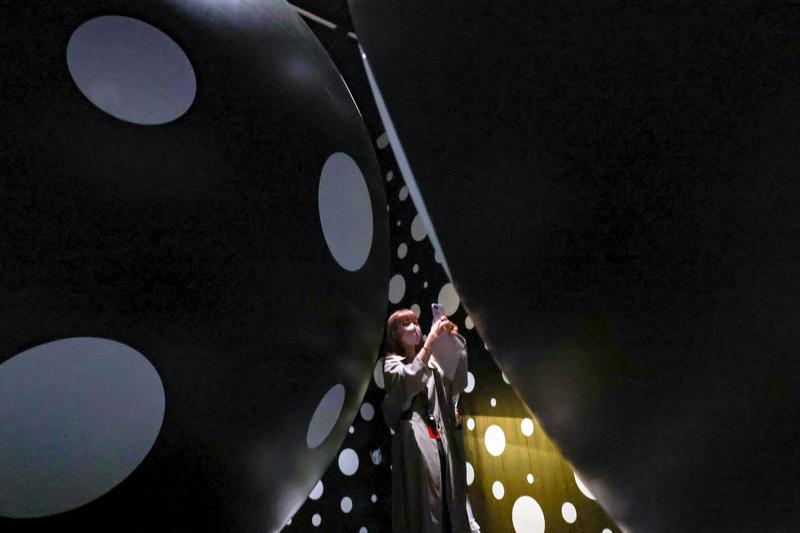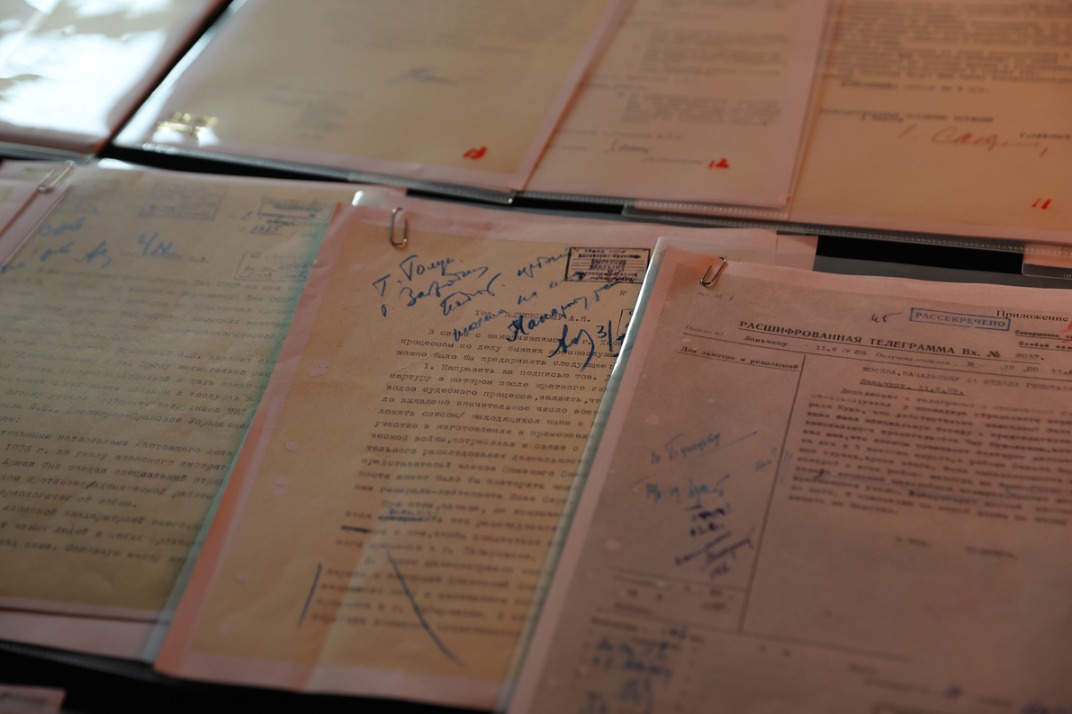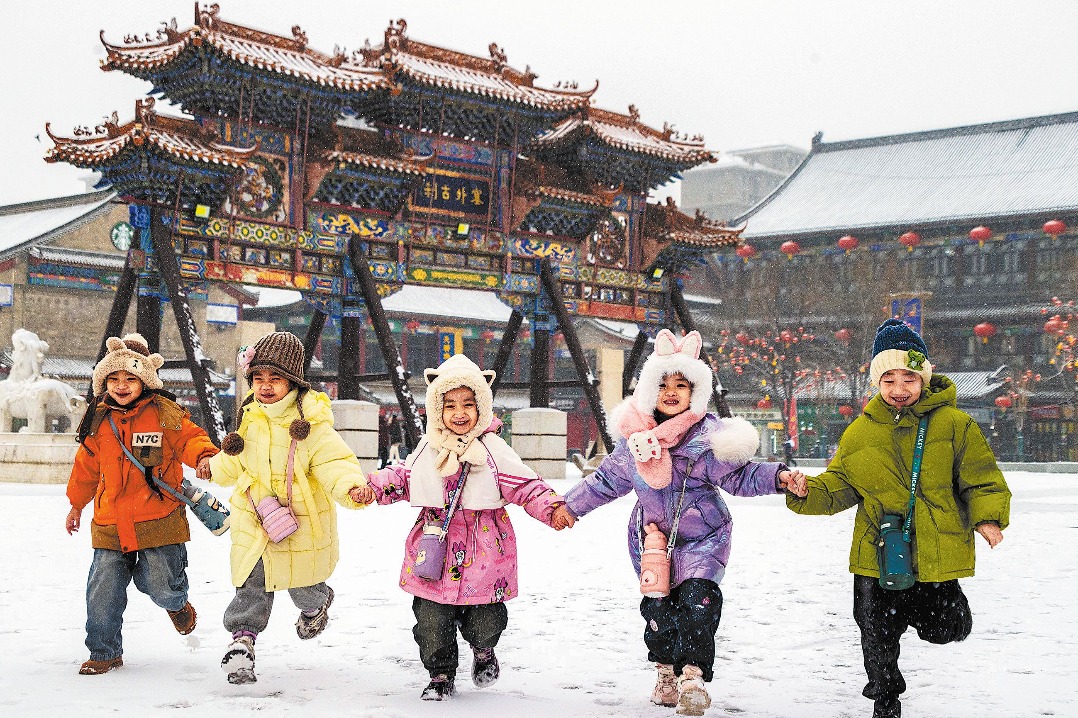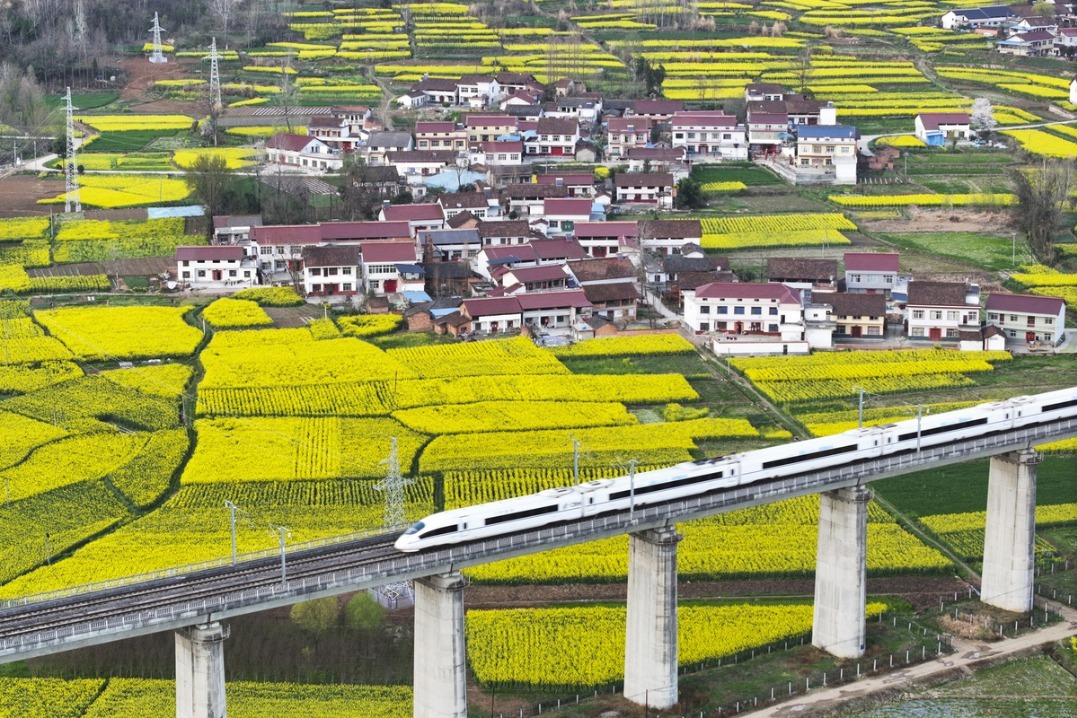Dot icon
A new retrospective of works by Japanese legend Yayoi Kusama at M+ affirms the artist's endless capacity for renewal and reinvention, writes Chitralekha Basu.


A glass-fronted cube sits inside a dark, bunker-like space called the Studio in the basement of M+ museum, obliterated, almost, by gigantic, polka-dotted inflatable black spheres. More polka dots, some with a mirror finish, are plastered on the Studio's black walls. Visitors to the space look a little lost, trying to find their way between the spotted orbs, hung from the ceiling and nearly touching the ground, and their infinite reflections.
A queue outside the glass cube leads to more mirrors and illuminated polka-dotted spheres. The wait time for 30 seconds of selfie time could be anything from 40 minutes to an hour. Ushers carrying stopwatches monitor the entry and exit points.
This is a slice of the fantasy world of Yayoi Kusama (born 1929), one of the most iconic women artists alive. Called Dots Obsession - Aspiring to Heaven's Love (2022), the installation could come across as theme-park entertainment material or the work of a master, highlighting humanity's place in a boundless, multitudinous universe.
If Kusama anticipated the day of the Instagram when she created her first mirror room in 1965, she was also way ahead of her time in calling attention to a few other things that we are finally reconciled to accepting as part of the human condition. Yayoi Kusama: 1945 to Now, which opened to the public last weekend, seeks to encapsulate the journey of a visionary artist who has consistently used her in-your-face, over-the-top approach to open a portal to necessary conversations - about mental health, caring for the planet, and the ties that bind the human race.
That the exhibition comes on the back of coping with nearly three years of pandemic-inflicted stress adds an extra layer of immediacy to the theme of art as therapy, which Kusama embraced a long time ago and has been revisiting ever since. This is evident in the never-ending loops of paint across the canvas in some of her instantly recognizable works such as The Pacific Ocean (1959) and Transmigration (2011).
A wall text breaks down the artist's process. While applying the brush strokes, one at a time, helped soothe Kusama's frayed nerves, the same effect can be experienced by viewers tracing those arcs visually. Transmigration was created with a specific motivation, however.
























